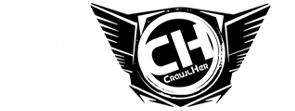|
This is where the rubber meets the road, or the rocks in my case. The following is a basic breakdown of how I plan to build the buggy. All plans are flexible and may change as I come across different solutions or other needs arise, but here is the starting point.
Frame: 1985 Toyota 4Runner
The vehicle is currently whole and being stripped down to the frame and cleaned up to prepare for the build.



Engine: Stock Toyota 22RE
Engine runs but will be removed and given a top-end overhaul including a basic cleaning, new injectors, and replace all the basic worn out components. Previous owner said timing was just recently done, so I may not get that far into the engine rebuild unless I find signs that lead me to investigate further. When rebuilding, the engine will have multiple components painted and/or powder coated by Specialty Powder Coating (supporter of UCORA) in order to make the vehicle not only perform well, but be a show piece as well.


Transmission: Stock Automatic Transmission
When driving it home, the transmission seems a little weak. I will give it a full flush and replace filters, but if finances exist, I may have it fully services and built strong enough for the coming use.
Transfer Case: Stock Toyota transfer case
The t-case should be gear driven given the year and will be verified during the tear down process. My intent is to build a dual transfer case setup with moderate gearing in the high range gears but lower gearing in the second gears. This will help keep the street ability of the buggy by allowing higher speeds in 2 wheel drive. When building, the transfer cases will be powder coated by Specialty Powder Coating (supporter of UCORA) in order to make the vehicle not only perform well, but be a show piece as well.
Front Axle: Stock 1985 Axle with axle truss.
The stock axle housing will be cleaned up and used in the build. I plan to disassemble the axles and replace them with stronger shafts. I will make the weak link in the vehicle near the wheels such as the locking hubs so trail repairs are simple in the event of breaking. A Toyota electric locker has already been obtained for use in the front axle, and I plan to use 4.88 gears to keep some street ability but still allow lower crawl rations when in low range. Eventually or as needed, upgraded axles may be sources such as Trail Gear or Diamond.
Rear Axle: Stock 1985 Axle
The stock axle housing will be cleaned up and used in the build. I plan to disassemble the axles and replace them with stronger shafts. I also plan to replace the worn drum brakes with a disc brake conversion in order to enhance the safety for the driver and stopping ability against the lower gears intended to be used. Eventually or as needed, upgraded axles may be sources such as Trail Gear or Diamond.
Suspension: Stock Leaf Spring Suspension
The current suspension is a mild lift on the vehicle. I will build a leaf sprung suspension, hopefully with the existing springs. If new springs are needed, these will be sourced from past UCORA supporters wherever possible. Eventually or if donations make it possible, a front 3-link and rear triangulated 4-link suspension will be set up to increase handling.
Seats: Suspension seating for 5.
As a long-time supporter or Crawl 4 Christ and UCORA, I will be purchasing seats from PRP. Front buckets will be matched to a 3-seat rear bench with 4-point harnesses to keep everyone safe and secure in all situations. All seats will have pouches for water bladders to keep hydrated while wheeling.
Lighting: Street Legal requirements
In AZ, a street legal vehicle must have working lights, turn signals, and a horn in order to stay legal. I will be using all LED lighting and since Truck-Lite & Rigid both have supported Crawl 4 Christ in the past and are now combined, I will plan to be buying these from them. Basic lighting with the additional rock lights and some LED light bars will all be used so The Spike can wheel both day and night with no difficulty, but also remain street legal.
Interior:
The interior will be laid out basic and straight forward. In addition to the seats mentioned above, storage will be designed so passengers can use a cooler in the back for snacks or lunch on the trail and water. I also plan to have a basic dash setup with Auto Meter (past sponsor) gauges and communication radios both CB and Amateur radio on board. I have an idea to use 12-volt headed vests for the occupants for winter trips, much like motorcycle riders use, in order to have warmth when needed. Other basics for the interior such as fuel storage, recovery and tool storage, and any safety equipment will be determined when the basic layout is completed.
Body:
We ordered a Hendrix Motorsports' rock crawling chassis that are engineered for safety, affordability, and strength. Their computer designed space frame technology weighs less and allows maximum use of interior space. The chassis can accommodate two front seats and a rear bench seat with ample room for spare parts, tools, and even an ice chest.
http://hendrixmotorsports.com/
I also got a special request granted, chassis #777! The body panels will be fabricated out of aluminum and used to not only show the name of the buggy, but acknowledge major partners and sponsors to the build. The hood and roof will be also built. A Spider Web Shade (past sponsor) will be used for the roof. I also intend to design a flat, removable, windshield for street use and have vinyl windows which will connect magnetically to keep rain out in bad weather.



To see more, check out The Spike Blog |












